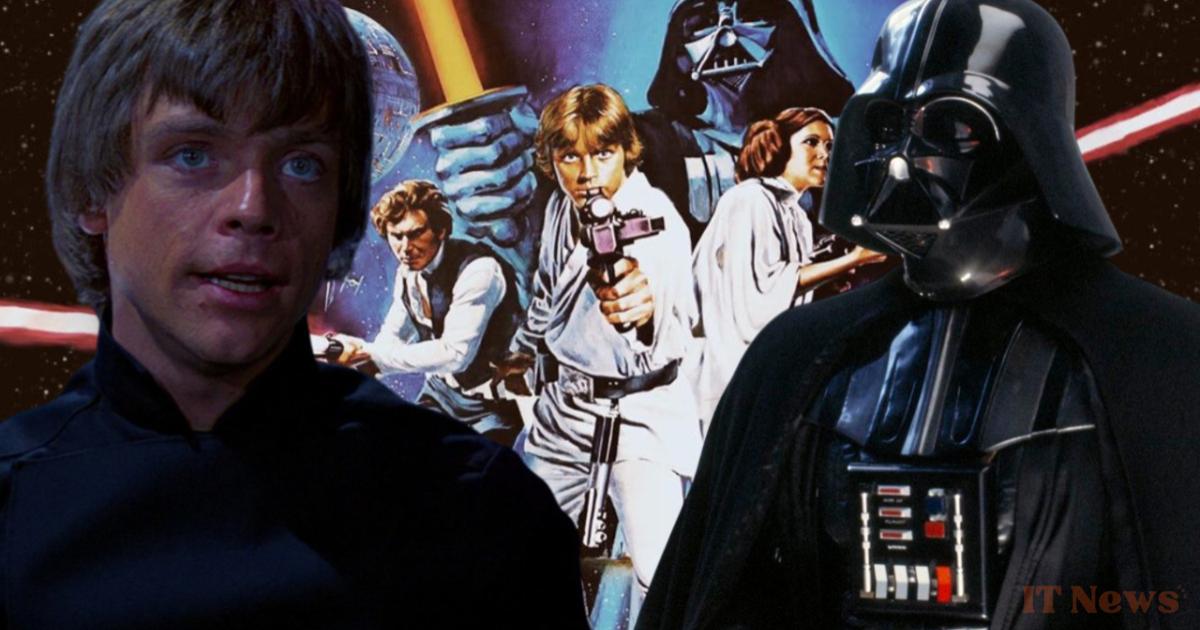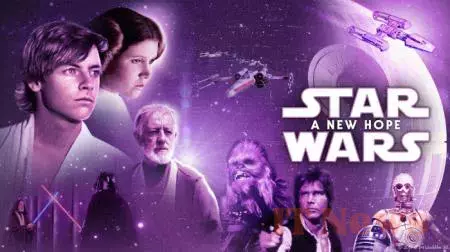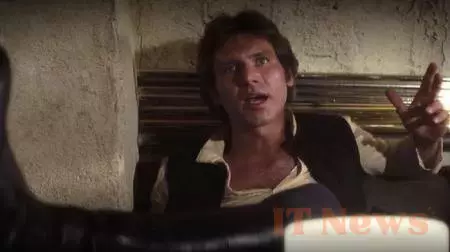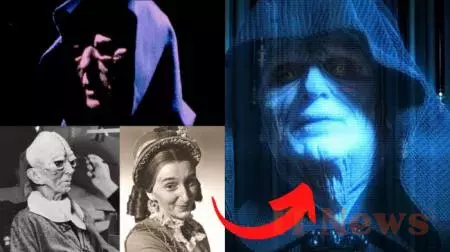You may not know this, but there are several versions of the original Star Wars trilogy. Indeed, over time, George Lucas has had fun revisiting the three original Star Wars films to make technical improvements, or even add entire sequences. We explain these changes in this article focusing on George Lucas's original trilogy.
Star Wars: Many Versions
In fact, the original A New Hope film is virtually impossible to find today. George Lucas ensured that the new versions of his trilogy supplanted the original films. Today, A New Hope as it was released in theaters in 1977 is impossible to find. Generally, the most widespread versions today are those from 1997 and 2011.
Indeed, for the 20th anniversary of the saga, George Lucas released a special edition. A unique edition in which the filmmaker added previously unseen sequences and extended certain scenes from the three films. He also reworked the CGI and special effects, and made a modification of the sound mix. But the most important change is obviously the addition of Jabba the Hutt in A New Hope. But we'll come back to that later.
Over time, George Lucas has found every excuse to modify his Star Wars trilogy, sometimes to the great displeasure of fans. In 2004, he worked on a DVD edition. In 2011, he modified his films again for Blu-ray releases. In short, the Star Wars you know today has nothing to do with the three original films.
Lucasfilm (and now Disney) has never officially reissued the original 1977 version in high definition. Fans have to make do with modified editions... or unofficially restored versions, like Harmy's Despecialized Edition.
What are the main changes?
And there have been a lot of changes over time. We'll try, as comprehensively as possible, to list the major differences between the first versions of Star Wars and the various reissues.
A New Hope
The film's title
For example, the original film's title, A New Hope, was added in 1981. Originally, in the version released in 1977, the film's title was simply Star Wars. When George Lucas realized he could make a whole license out of the Star Wars saga, just after the release of The Empire Strikes Back in 1980, he renamed the film Star Wars – Episode IV: A New Hope.
Han Solo and Greedo
The sequence that has undergone the most changes is clearly the one between Han Solo and Greedo. Originally, Han Solo simply shoots Greedo, who dies. In the 1997 version, George Lucas modified the sequence so that Greedo shoots first, misses, allowing Han to return fire. This was a way for George Lucas to refine his Solo character. Indeed, the fact that he replies makes the sequence a more measured scene and allows the audience to have more empathy for Han Solo.
But in 2004, George Lucas changed his mind again and modified the scene once again. This time, the two characters shoot at each other simultaneously. Greedo misses his target, but Solo doesn't. Finally, in 2019, the scene was modified again by Disney. The studio with the big ears decided to give Greedo an unsubtitled line and reworked the sequence's special effects.
Jabba the Hutt
From the start, George Lucas wanted to incorporate Jabba the Hutt into his story. Except that in 1977, he didn't have the technical means or the budget to bring a giant space slug to life. So, while the dialogue sequence between Han Solo and Jabba does exist in the 1977 version, it has nothing to do with the scene you know. Indeed, in the very first version of A New Hope, Jabba is played by actor Declan Mulholland, a tall man wearing a fur vest. Lucas intended to replace Mulholland in post-production with a stop-motion character. Due to time and budget constraints, the scene was cut. data-instgrm-captioned="" data-instgrm-permalink="https://www.instagram.com/reel/DJCQeDui47Y/?utm_source=ig_embed&utm_campaign=loading" data-instgrm-version="14">
But in 1997, George Lucas decided to revisit this sequence and included the dialogue scene between Han and Jabba. In the original scene, Ford circles very close to Mulholland. To keep the sequence functional, Han Solo then steps on Jabba's tail. The smuggler is digitally enhanced. Boba Fett was also added to the background of the scene.
Then, in 2004, George Lucas returned once again to the scene, deciding to improve the special effects of this first meeting between the two characters.
These are just a few notable examples among many others. In 2011, George Lucas had fun profoundly modifying his film and adding CGI, even entire scenes, almost everywhere in the film.
The Empire Strikes Back
Of course, George Lucas also returned to the other parts of the trilogy. The Empire Strikes Back, the second installment, is no exception to the rule. Even if the changes are fewer.
Hologram of the Emperor
What's crazy, and we've completely forgotten this over time, is that originally, Emperor Palpatine was not played by Ian McDiarmid. Initially, it was actress Marjorie Eaton who physically embodied the Emperor behind a mask, while his voice was dubbed by actor Clive Revill. In 2004, after the release of The Phantom Menace and Attack of the Clones, George Lucas decided to reshoot Palpatine's hologram scene by replacing Marjorie Eaton with Ian McDiarmid.
Boba Fett
Similarly, initially, Boba Fett was voiced by actor Jason Wingreen. But George Lucas preferred to re-record the voice of his bounty hunter in 2004 following the induction of Jango Fett in the guise of Temuera Morrison.
Return of the Jedi
With his third film, George Lucas completely let loose and made a series of changes. Radical changes.
Max Rebo Band
When we arrive at Jabba the Hutt's house, the rock group Max Rebo Band is in full concert. In 1997, George Lucas significantly modified this sequence. He changes the music, replacing the song Lapti Nek with Jedi Rocks. As for the puppets, they are erased in favor of CGI.
Oola's Death
Remember, in Return of the Jedi, Jabba knocks poor Oola into his Rancor's cage. In the original version, the character falls into the pit, and her scream is only heard off-screen. In 1997, George Lucas called back actress Femi Taylor to shoot additional sequences. Oola returned, but this time, George Lucas added several shots from inside the pit, to confront Oola directly with the Rancor.
Darth Vader
At the end of Return of the Jedi, Darth Vader intervenes to save Luke from the Emperor's clutches. In the original version, the Sith Lord silently intervenes. But, in 2011, Lucas decided to add a line to Vader. The latter murmurs a "no" before shouting a long "nooooo" as he approaches Palpatine. George Lucas's desire to create a parallel with Revenge of the Sith.
The Death of Vader
In 2004, George Lucas decided to change Vader's eye color when Luke Skywalker removed his helmet. He thus replaces the brown eyes of Sebastian Shaw with the blue eyes of Hayden Christensen.
Anakin's Force Ghost
At the very end of Return of the Jedi, when the good guys celebrate their victory against the Empire, Luke Skywalker sees the Force ghosts of Obi-Wan, Yoda and Anakin. In 1983, Anakin was then played by the actor Sebastian Shaw. It was not until 2004 that Hayden Christensen replaced Sebastian Shaw in this sequence.
Thus, over time, George Lucas made more or less significant changes to his Star Warstrilogy. An often controversial choice, which leads to the gradual disappearance of the original work. Decisions which also raise ethical questions, around the work of previous artists, quite simply erased, but also around the longevity of a work, its importance, and its relationship to its time. Modifying a work is also an admission of failure, and above all a way of distancing oneself from one's relationship to History, and to one's time...









0 Comments